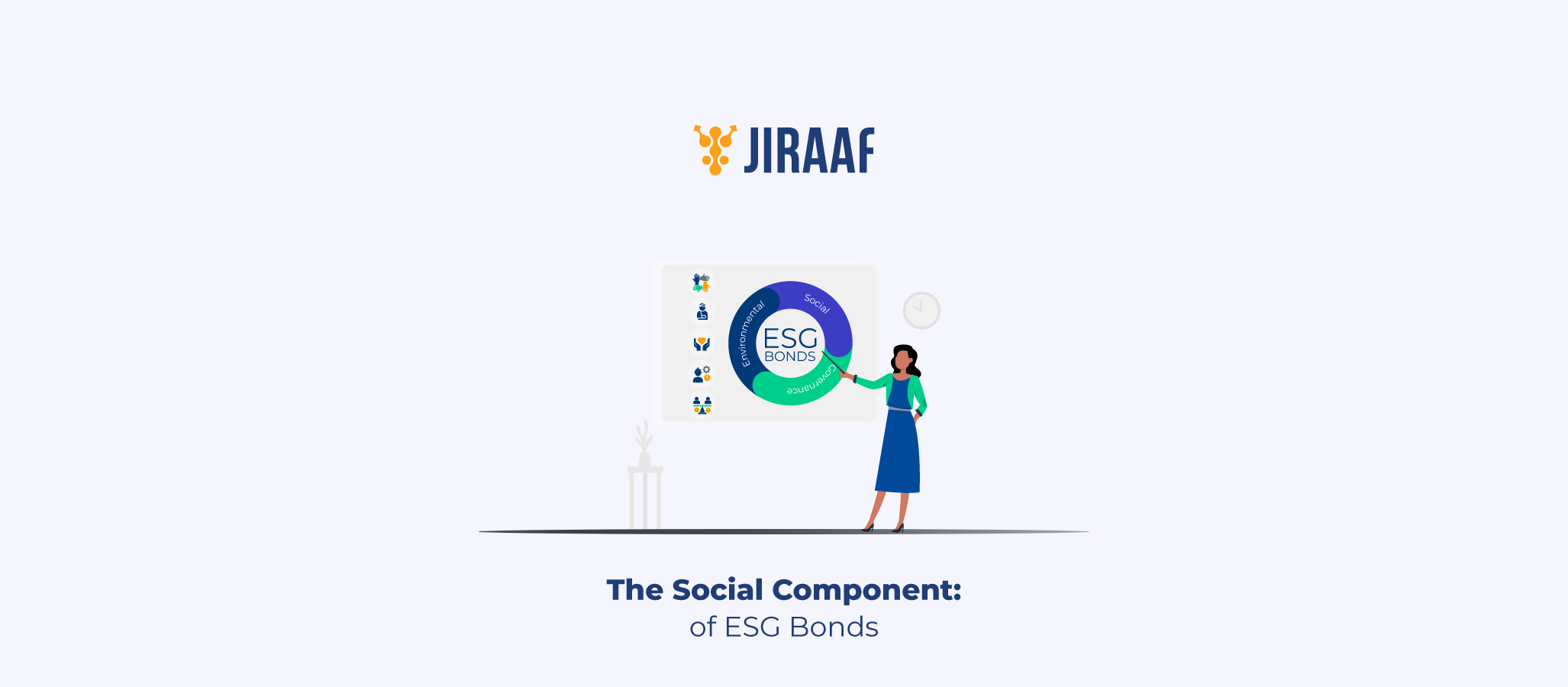The recent discontinuation of the Sovereign Gold Bond (SGB) scheme by the Indian government marks a shift in the country’s gold investment landscape. Since its inception in 2015, SGBs had emerged as a preferred investment choice for Investors seeking exposure to gold without the complications of physical gold possession. What made SGBs attractive include – an annual fixed interest rate along with asset linked returns, tax benefits, and sovereign guarantee.
This policy change has created a void in the market, leaving investors searching for alternatives that can replicate the unique combination of security, returns, and tax advantages offered by SGBs.
This article aims to explore a few viable alternatives to SGBs available in the Indian market today. We will analyze the features, advantages, and limitations associated with each option, providing a comprehensive framework for investors to make informed decisions.
The 7 Best Alternatives to SGBs in India
1. Gold ETFs (Exchange-Traded Funds)
Gold Exchange-Traded Funds represent one of the closest alternatives to SGBs in terms of convenience and structure. These are passive investment instruments that track gold prices and are traded on stock exchanges, similar to shares.
How they compare to SGBs: Unlike SGBs, Gold ETFs do not offer an interest component, which was a significant advantage of the former. However, they provide superior liquidity as they can be bought and sold during market hours at prices that closely reflect the current market value of gold. This addresses one of the key limitations of SGBs, which had a minimum holding period and limited liquidity in the secondary market.
Pros:
- High liquidity with real-time trading
- No concerns about purity or storage
- Smaller investment amounts possible
- Transparent pricing mechanism
Cons:
- Annual expense ratio (typically 25bps – 75bps) that erodes returns
- No interest income unlike SGBs
- No sovereign guarantee
2. Gold Mutual Funds
Gold mutual funds offer an indirect way to invest in gold. GMFs function as open-ended investment vehicles that derive their value from the underlying assets they hold. The majority of their corpus is typically deployed in Gold ETFs, which in turn track the domestic gold price movements by holding physical gold. Additionally, some funds may diversify into gold mining stocks, thereby introducing an element of equity-market exposure.
How gold mutual funds work: These funds typically invest a significant portion of their corpus in Gold ETFs and sometimes in shares of companies engaged in gold mining, refining, or marketing. Unlike physical gold, where the value is dictated solely by demand-supply dynamics and global macroeconomic factors, gold mutual funds are subject tofund management strategies, which may include tactical asset allocation, hedging, and liquidity management. As a result, their performance may not mirror gold prices perfectly, leading to potential tracking errors.
Key differences from SGBs: Unlike SGBs, which were direct sovereign-backed investments with a fixed interest rate, gold mutual funds are market-linked instruments without guaranteed returns. They also lack the tax advantages that SGBs offered, particularly the capital gains tax exemption at maturity.
Benefits:
- Professional management
- Systematic Investment Plan (SIP) option available
- Diversification within the gold sector
- Potential for higher returns through tactical allocation
Drawbacks:
- Higher expense ratio compared to ETFs
- No fixed interest component
- No sovereign backing
- Taxation at applicable rates without special benefits
- Potential deviation from pure gold returns due to fund management strategies
3. Digital Gold
Digital Gold is currently an unregulated product in India, the lack of specific legislation means that investor protection frameworks, grievance redressal mechanisms, and compliance norms remain unclear.
As an asset class Digital Gold has emerged as a popular alternative in recent years, that enables investors to buy, sell, and hold fractional ownership in gold without the logistical challenges of storage or security.
What is digital gold: Digital gold allows investors to buy, sell, and hold gold in electronic form. Each unit of digital gold is backed by physical gold stored in secure vaults by the service provider. While Digital Gold providers claim to hold physical reserves on behalf of investors, there is no statutory guarantee or independent regulatory body ensuring compliance.
How it works and platforms offering it: Investors can purchase digital gold for amounts as low as ₹1, making it highly accessible. The gold is stored by the service provider, and investors can sell their holdings at any time at the prevailing market rate or request physical delivery (usually with a minimum quantity requirement).
Pros & cons vs. SGBs:
Pros:
- Extreme flexibility in investment amounts – Gold SIP Investments
- High liquidity with instant buying and selling
- Option to convert to physical gold
- No need for a demat account
- Convenient mobile platform access
Cons:
- Unregulated – Absence of oversight raises concerns regarding investor protection.
- Counterparty Risk – Dependence on private vaulting entities introduces exposure to service provider solvency risks.
- Storage fees after a certain period (typically 2-5 years)
- Spread between buying and selling prices
- No interest component
- Taxation similar to physical gold with no special benefits[PK1]
4. Gold Mining Stocks & Gold Bonds
For investors comfortable with higher risk and seeking potentially higher returns, gold mining stocks and other gold-related securities offer an alternative way to gain exposure to the gold market.
Investing in gold-related companies: This involves purchasing shares of companies engaged in gold mining, processing, or marketing. The performance of these stocks is influenced by gold prices but also by company-specific factors such as management quality, production costs, reserves, and operational efficiency.
The investment proposition of gold mining equities cannot be meaningfully compared with Sovereign Gold Bonds because they represent fundamentally disparate asset classes with different economic characteristics:
- Capital structure implications: SGBs represented senior claims with priority of payment, while equity represents the most subordinated claim in the capital structure hierarchy.
- Nature of the financial instrument: SGBs represented sovereign debt instruments with gold price linkage, whereas mining equities constitute residual claims on corporate cash flows with undefined maturity.
- Risk-return spectrum positioning: SGBs backed by government are placed as safer investments, while mining equities inhabit unbounded potential returns but substantial downside risk.
- Capital structure implications: SGBs represented senior claims with priority of payment, while equity represents the most subordinated claim in the capital structure hierarchy.
Pros and cons compared to SGBs:
Pros:
- Potential for higher returns than pure gold investments – Dividends/Equity Appreciation
- Option for Gold SIP Investment in equity
- Leverage to gold price movements (stocks often move more dramatically than gold prices)
- Participation in company growth beyond gold price appreciation
Cons:
- Company-specific risks (management, operational issues, etc)
- Influenced by broader market sentiments
- Currency risks for international mining companies
5. Physical Gold (Coins & Bars)
Despite the digital revolution in gold investments, physical gold remains a preferred choice for many traditional investors, particularly those who value tangible assets.
Why some investors still prefer physical gold: Cultural significance, sense of security, and the tangible nature of the asset continue to make physical gold attractive. Additionally, physical gold can be quickly liquidated in times of emergency through numerous channels, including local jewellers, and can be used as collateral for loans.
Pros and cons compared to SGBs:
Pros:
- Complete ownership and direct possession
- Immediate liquidity
- Usable as collateral for loans
- No dependence on financial infrastructure
Cons:
- Additional Costs – Making charges/GST, wear-tear expenses while liquidating
- Concerns regarding storage or purity of metal
- No interest income
- No tax benefits compared to SGBs
6. Gold Monetization/Deposit Scheme (GMS/GDS) with Banks
Gold Monetization/Deposit Scheme is in the nature of a fixed deposit in gold. The customers can deposit their idle gold under GMS/GDS which provides them safety, interest earnings and asset linked appreciation. The Scheme is intended to mobilize the idle gold lying in households, institutions, corporates & temple trusts of the country and facilitate its use for productive purposes, and in the long run, to reduce country’s reliance on the import of gold.
GMS/GDS instead of being an investment asset class is a scheme that offers an opportunity to gold owners to earn returns on their existing metal reserve.
How it works: The scheme operates on a model involving depositors, collection and testing centers (CTCs), and banks. Physical gold in any form (jewelry, coins, bars) can be deposited for a specified tenure, during which it earns interest while being utilized productively within the financial system.
The return on such deposits varies bank to bank, while for State Bank of India interest rates on gold deposit schemes, with Short Term Gold Deposits (STBD) earning 0.50% p.a. for 1 year, 0.55% p.a. for 1-2 years, and 0.60% p.a. for 2-3 years (as on March 20,2025). Medium- and Long-term Gold Deposits earn higher rates at 2.25% p.a. and 2.50% p.a. respectively. For all schemes, the principal is denominated in gold while interest is calculated and paid in Indian Rupees based on the gold value at the time of deposit.
Pros and cons compared to SGBs:
Pros:
- Interest income with asset appreciation
- Elimination of storage and security concerns
- Relatively safer
Cons:
- Min deposit requirements (usually 10g, though some banks accept smaller qtys.)
- Limited participating bank network, creating geographical access constraints
- Premature withdrawal penalties that can significantly impact effective returns
7. Real Estate as a Hedge Against Inflation
While not a direct alternative to gold, real estate serves a similar function in many investment portfolios as a hedge against inflation and currency depreciation.
Why real estate can be an alternative to gold investments: Both gold and real estate are tangible assets that have historically preserved value during inflationary periods. Real estate offers the additional benefit of potential rental income, similar to the interest component of SGBs.
Comparing real estate to SGBs:
Similarities:
- Long-term wealth preservation
- Hedge against inflation
- Potential for capital appreciation
- Tangible underlying asset
Differences:
- Much higher ticket size for real estate
- Rental income potential versus fixed interest
- Lower liquidity compared to gold
- Location-specific risks and opportunities
- Higher maintenance and transaction costs
- Different tax treatment
Key considerations for real estate as an alternative:
- Geographic diversification
- Commercial versus residential properties
- REITs (Real Estate Investment Trusts) as a more liquid alternative
- Regulatory environment and potential changes
- Long-term urbanization trends
How to Choose the Right Alternative for You
Selecting the most appropriate alternative to SGBs requires a careful assessment of your financial goals, risk tolerance, and investment constraints. Here’s a framework to help you make an informed decision:
Identifying your investment goals
- Capital preservation: Consider Gold ETFs, physical gold, or digital gold
- Regular income: Look at gold mining stocks with dividends or gold-linked FDs
- Long-term wealth creation: A mix of Gold ETFs and real estate might be suitable
- Short-term trading: Gold ETFs offer the best liquidity and price discovery
Risk tolerance
- Conservative investors who valued SGBs for their sovereign guarantee might find Gold ETFs combined with government securities a suitable alternative
- Moderate risk-takers can consider gold mutual funds or a combination of Gold ETFs and gold mining stocks
- Aggressive investors might allocate more to gold mining stocks or real estate
Investment horizon
- Short-term (0-2 years): Gold ETFs or digital gold offer the best liquidity
- Medium-term (2-5 years): Gold mutual funds
- Long-term (5+ years): A combination of physical gold and real estate
Evaluating liquidity needs
- Emergency funds: Physical gold or digital gold offers quick conversion to cash
- Planned expenditures: Gold ETFs allow for systematic withdrawal plans
- No immediate liquidity needs: Consider higher-yielding but less liquid options like real estate or gold-linked bonds
Considering tax efficiency
- Assess your tax bracket and how different gold investment alternatives are taxed
- For high-income investors, explore options with indexation benefits
- Consider the impact of wealth tax or any future tax changes on different asset classes
The Bottom Line
While no single alternative can perfectly replicate all the features of SGBs, a thoughtful combination of the options discussed can help create a portfolio that achieves similar objectives –
- For safety and liquidity: Gold ETFs emerge as the closest alternative, lacking only the interest component and sovereign guarantee
- For smaller investments: Digital gold offers unmatched flexibility and convenience
- For long-term wealth preservation: A combination of physical gold and real estate
- For income generation: Gold mining stocks, Real Estate with dividend potential
Diversification: Perhaps the most important lesson from the discontinuation of SGBs is the risk of over-reliance on any single investment avenue, even one backed by the government. A well-diversified portfolio spanning multiple asset classes—including different forms of gold exposure—offers the best protection against policy changes, market volatility, and economic uncertainties.
Discover fixed income investments with Jiraaf, a SEBI registered online bonds platform that educates and brings access to a wide array of bonds. Sign up today to explore diversified fixed income investment opportunities to support your goal-based wealth creation journey. Start investing!




